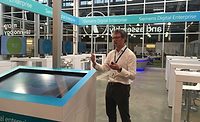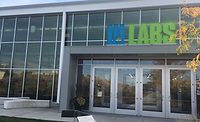Schneider Electric focuses on digital transformation of the food and beverage industry
Maple Leaf, Frito Lay and Ken’s Foods among presenters at this year’s Innovation Summit.

At its recent Innovation Summit, Schneider Electric unveiled three new solutions for the food and beverage industry to help processors achieve operational excellence and efficiency while ensuring they stay in regulatory compliance.
“The food and beverage industry is going through a profound transformation driven by cost pressure, growing consumer demand for variety and increasing regulations,” says Rob McGreevy, vice president of information, operations and asset management at Schneider Electric.
One way processors can overcome these challenges is to digitally transform their operations. But with the availability of a plethora of new technology, it can be difficult to know the right investments to make. The new solutions being introduced from Schneider Electric are designed to address the challenges of energy performance, advanced process control and label assurance.
Several of the presentations by food and beverage companies provided insight into how they are using technology to further their production processes. Vicente Olivo-Espinosa, director of information solutions for Maple Leaf, presented how his company is improving operational performance through digitization.
Maple Leaf has over twenty production facilities, but the company wanted its Heritage facility in Canada to be its model plant. The facility is 400,000 sq. ft., operates 24 hours a day, seven days a week and processes 450,000 lbs. of protein daily.
“The IT priorities were to build automation throughout the plant and have an operational excellence program to allow people in the plant to understand how it should operate,” Olivo-Espinosa says.
Maple Leaf developed the Pillars of Operational Excellence, which includes: direction setting, health and safety, food safety and quality, waste elimination, autonomous machines and preventative maintenance.
Ed Michel, maintenance engineer and senior manager for Frito Lay, presented how his company increased asset reliability. “Reliability is the great enabler,” Michel says. “And we wanted to know how to get more out of our existing plants.”
A big part of this effort was using condition-based tools to inform preventative maintenance activities and transitioning from using self-reported, manual data to real-time overall equipment effectiveness (OEE) measurement.
“In 2015, we looked at everything we had and integrated the system electronically to pull together all three components—availability, performance and quality,” he says. “All the information is available in real time, either through desktop or on the floor through iPads. So, all users have online OEE performance data at every second.”
In addition, Ken’s Foods presented how it is improving quality compliance reporting using Schneider Electric’s Wonderware Historian.
Looking for a reprint of this article?
From high-res PDFs to custom plaques, order your copy today!







